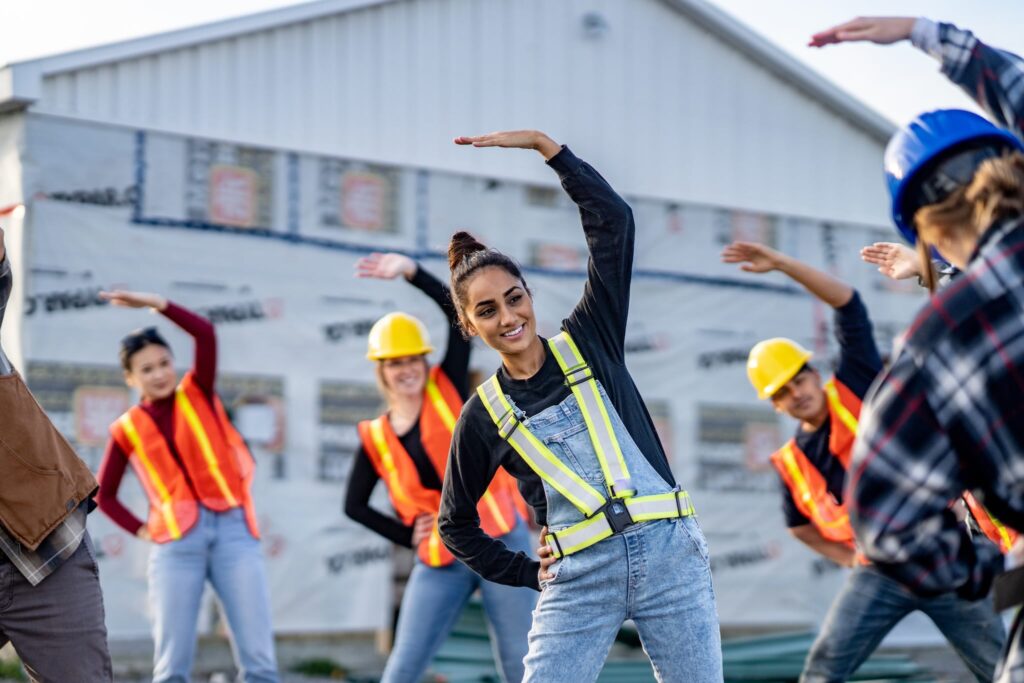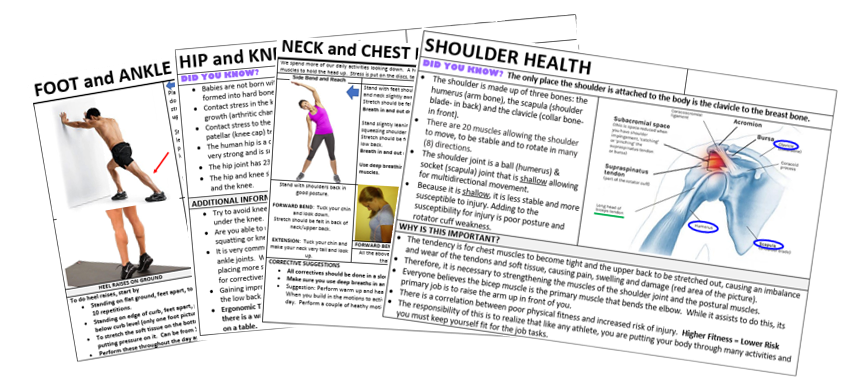Over time our bodies may not be able to heal all the stressors we place on it. The result is discomfort, aching, and soreness, but this can be improved upon with a workplace Early Intervention Process. Early intervention by nature should be proactive in addressing total worker health. Performing a job analysis and determining physical requirements; apply a solid root cause analysis identified problem areas; implement ergonomic changes; provide directed education/training; and utilize the Healthy Motions stretch and flex access as early intervention will decrease the discomfort, aching, and soreness.
Shoulder Pain
What: Pain at the front of the shoulder can be pinching of soft tissue between the 2 bones of the shoulder. causing pain when lifting and reaching.
Cause: Rotator Cuff (RTC) Muscle Weakness The rotator cuff is a group of muscles on the shoulder blade that attach to the upper arm bone. One of their jobs is the keep the 2 bones of the shoulder separated while performing movement. Most of the time poor shoulder blade posture, and weak RTC muscles being overpowered by the larger deltoid muscles will bring the 2 bones of the shoulder together. This causes the impingement of tissue and damage to the important tendons in the shoulder joint.
Solution: Fight the forward slump against gravity by strengthening an upright posture; perform easy RTC strengthening daily; scapular squeezes; and shoulder rotation against resistance. Use of KYEL Group’s Healthy Motions self guided care activities addresses this specifically.
Low Back Pain
What: Pain in the low back area and sometimes down into the leg(s).
Cause: Most back pain is generated in a mechanical fashion. Meaning industrial athletes spend most of their day performing activities in a forward bent or seated/slouched position which puts pressure on the front of the spinal discs between each of the vertebrae. When pressure is put on the front of the disc, it pushes the material of the disc towards the back (behind us). This “bulge” can encroach on the spinal nerves that feed the leg. Commonly, people will have muscle spasms, which is the body’s response to the disc and nerve irritation. It is not typically a strain of the muscle.
Solution: In 2017 the American College of Physicians Practice provided a Guideline on Noninvasive Treatment, and recommended to continue activity that does not cause irritation, such as walking, use of NSAIDs and ice. Use of KYEL Group’s Healthy Motions self guided care activities addresses this specifically.
Foot and Heel Pain
What: Pain in the heel or bottom of foot when you first get up to walk which progresses to being constant.
Cause: Not having correct foot arch support, muscle inflexibility of the lower body, standing on hard surfaces for long periods. Typically, it is a soft tissue issue, but can be a bone problem.
Solution: Start with a good arch support. Just because something is padded and comfortable does not mean it is supporting the arch of your foot properly. Assure good ankle/calf mobility by stretching: calf (2 ways); hamstring stretch; and roll the arch of your foot. Kinesiotape is a good way to temporarily support the arch, inhibit overuse of calf muscles or provide more heel pad. Use of KYEL Group’s Healthy Motions self guided care activities addresses this specifically.
Upcoming posts will cover each of these common industrial athlete problem areas in detail.


